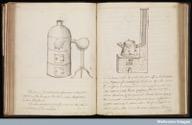In her influential essay "Throwing Like a Girl," the feminist philosopher Iris Marion Young argued that boys and girls are often taught to inhabit space through different kinds of bodily movement. Using the example of throwing a ball, she transformed the act of throwing into a learned performance by showing that girls were taught to move their bodies less and that boys were taught to move their bodies more. Less movement was feminine. More movement was masculine. Young made this point to illustrate the phenomenological (and, hence, learned) foundations of gender, and to counter the claim that gender was a naturalistic or essential category that emanated from a child's sex. Young's work also showed that bodily acts like throwing a ball are epistemic things to which children learn to attach meaning through performative experiences and routines. In short, bodily modalities carry meaning.
Drawing from Young's work, as well as the research of Judith Butler, this paper uses eighteenth- and nineteenth-century girlhood notebooks to argue that the act of writing and copying—a bodily modality—can be used to study the historical relationship between gender and natural knowledge. I treat notebooks as visual technologies that can be used to investigate how girls employed the act of inscription to associate feminine virtues with various forms of natural knowledge that they encountered on a daily basis. Put another way, I wish to explore how girls learned to gender science through the kind of graphic interface facilitated through various scribal performances required to make and use a notebook and other graphic objects.

